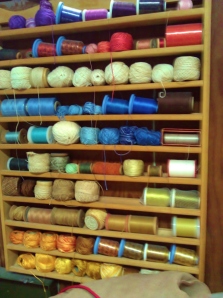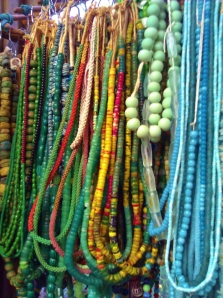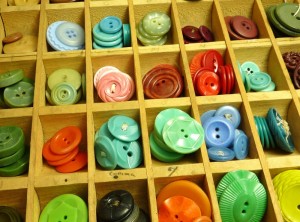HOW MUSEUM DISPLAY REMINDS ME OF HOSPICE
I’m taking an online class on making mounts for museum display through the Northeastern States Conservation Center. A mount is the supporting structure that allows an artifact–a bone, a book, a bonnet, a basket–to be safely displayed in an exhibit. I want to learn more about making such displays, for my new series of artwork.
I’m in way over my head. Almost four weeks in and I’m still three weeks behind. There is so, so much more than I could ever have imagined to the incredible world of mount making. Mounts can be as creative and beautiful as any art form. And like many art forms, the discipline is formidable. So many things to consider: How fragile is the artifact? What do you want the viewer to see? What materials will not interact and damage the artifact? What will protect it from shock–everything from bumps and shakes to vibrations from passing trucks and earthquakes? The reading requirements looks about as manageable as WAR AND PEACE, without all the Russian names.
I’ve been reading an article called MOUNTMAKING by Pam Gaible, then Mount Making Supervisor at the Field Museum of Natural History. Ms. Gaible presented it at the American Association of Museums Convention in 1991.
I was fascinated by this paragraph:
How do you make a mount?
There are lots of factors to be considered when making a mount. A very important one is to have open channels of communication between the developer, mountmaker, conservator, and designer.First the developer compiles an artifact list. Then the mount shop supervisor, the developer, and the conservator review the artifact list and create a photo book of the artifacts. The book contains a page for each artifact, which shows photo, measurements, material notes, and conservation concerns for mounting of the objects. It also contains a rough sketch of how an object can be mounted and a time estimate for making that mount.
She shows a few pages from such a book. The drawings and illustrations are beautiful. It looks like an artist’s sketchbook.
I once had the honor of viewing Cynthia Toops‘ sketchbook. Cynthia is one of my favorite polymer clay artists. Her work has a narrative feel that resonates with me. Sometimes playful, always thoughtful, charmingly folkloric yet sophisticated. Her sketchbook was as beautiful as her artwork, with tiny, exquisite drawings, details and notes. I am reminded that sometimes our tools and processes, just like museum mounts, support our art. And yet are so very artistic in themselves.
Then I read this paragraph, describing kinds of mounts:
* A typical disappearing mount. A mount that you aren’t aware of
when you view the object.
* A mount that keeps an object from migrating in the case.
* A mount that absorbs shock.
(This shock may be as small as the vibration of air conditioning
equipment or as large as an earthquake) [West Coast Style].
* A mount that helps preserve the existing structure of an object.
* A mount that is semi-permanently attached to the artifact and
functions as a handle and support.
(Rather than handling the object, you handle the mount.)
* A mount that supports an object while at the same time creates
the illusion that the mount is something else.
(Such as a mount that looks like a person, horse or campfire.)
I know this is weird–Lord, I can find synergy in anything these days!! But I thought this sort of sounds like my grief writing workshop.
A disappearing mount….that you aren’t aware of when you view the object. My purpose is to get people writing and talking about their grief. But it has to be subtle, almost invisible. Almost effortless. I do this by keeping the writing tasks short and directed. Even the poetry writing exercises are originally designed to be used with elementary school children.
But simplicity does not mean meaningless. Even the “easy” outlines create powerful results.
* A mount that keeps an object from migrating in the case. We use topics and time limits so that people can’t sink into their grief. Everything is quick, moves along. We take time to share, and cry. But we aren’t left to wander off into our misery.
* A mount that absorbs shock. A person who is grieving has suffered an enormous blow to their system. Everything hurts. Nothing brings relief. In our class, people feel like they can relax. They can cry. They can say what they really feel. Because everyone there knows what it’s really like. As one writer said, “It’s like we’re all on the same lake in a different boat!”
* A mount that helps preserve the existing structure of an object. We are deeply changed by grief. We will never be the same. But we are also still…..us. We remain. We survive. We go on, alone.
* A mount that is semi-permanently attached to the artifact and functions as a handle and support. People don’t stay long in the support groups. They come when they are ready for something more, something to help them move along. They get what they need. They heal. They go back to their lives, a little stronger, a little more resilient. They move on.
A mount that supports an object while at the same time creates the illusion that the mount is something else. I had to think about this for a moment. Then it dawned on me….
People think they come to a support group or a support workshop for help. They think we have the answers, or a process that will help them feel better.
But all we do is provide a safe place for them to talk. To share. To contemplate what this loss means to them. They do the hard work, the heavy lifting. They look at the things they’re afraid to say, or think, because that might mean they’re “not a good person”. (Almost all deaths are complicated, and some are more complicated than others.)
They dig deep into themselves, and let the light in.
They share with others who are in the same place. They sympathize. They offer comfort, courage, support. Wisdom. Understanding.
They do this for themselves, and for each other. We, the facilitators, sit and look on in astonishment.
Ah, yes, museum display and hospice/bereavement services. Who knew how much they have in common?!









